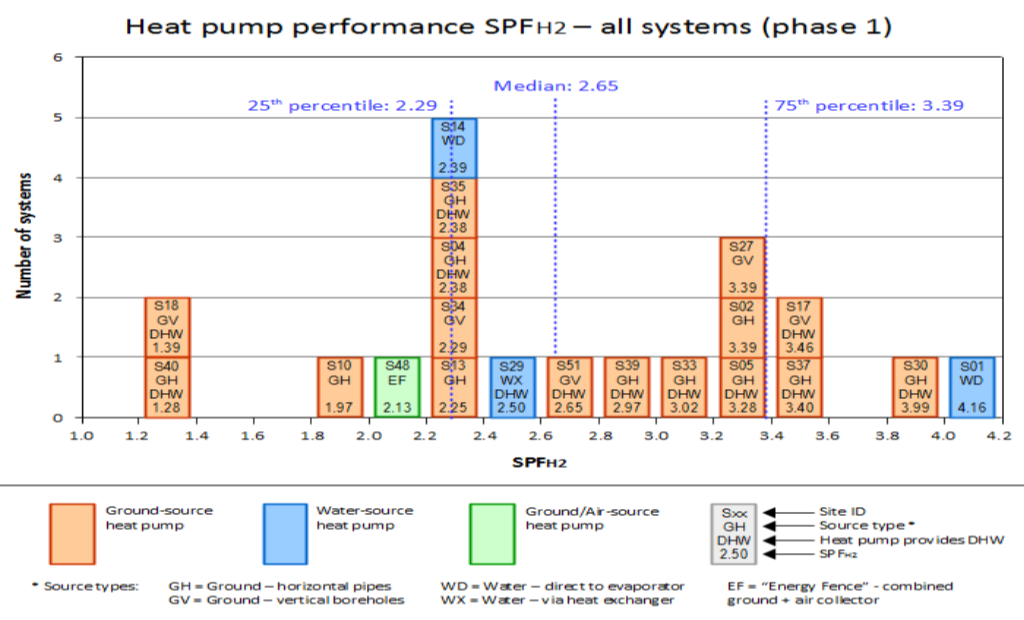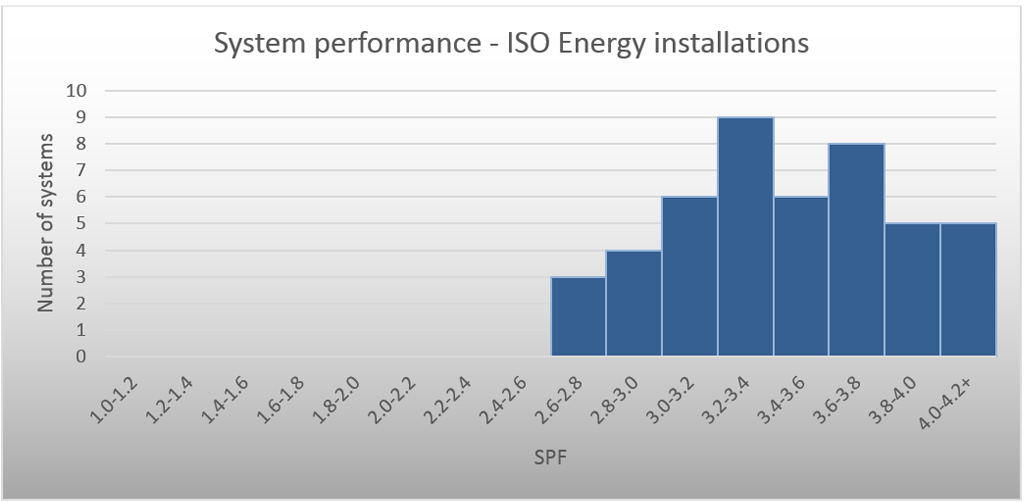It makes for depressing reading about the state of the UK Heat Pump installation industry. DECC have monitored twenty-one ground source heat pumps over a twelve-month period with an installed capacity of 910 kW. Amongst their key findings are:
- Ground source heat pumps operating in the UK ought to have a seasonal performance factor (SPF) of better than 3.
- 57% of the heat pumps they monitored had an SPF better than 2.5
- 33% of the sites had an SPF of better than DECC’s target of 3.
In other words, two-thirds of these heat pumps performed worse than the target of 3.
Fortunately they note that all of the systems they monitored would have produced less CO2 emissions than an equivalent oil-fired boiler and nearly all of them would have saved the client money.
DECC note in their report that the best performing heat pumps are characterised by factors that are
“… aspects of system design, installation and operation and therefore point towards the importance of getting these three elements right in order to obtain good in-situ heat pump performance.”
We can only agree. You get what you pay for. Designing and installing the system properly in the first place is the key to an efficient and long-lasting system. Depressingly common ignorance, old-fashioned mechanical design that is unaware of the need to design for low temperatures, and installation companies that cut corners to reduce the initial price ticket of a system at the cost of its long-term efficiency are the root cause of this dismal performance.
We too at Isoenergy have been monitoring the performance of some of the systems we have installed over the last few years. Our sample is a little larger than DECC’s. We have monitored 46 properties, many of them hard-to-heat, old, listed buildings that many people incorrectly consider unsuited to heating with Ground Source Heat Pumps. These 46 properties between them have an installed capacity of about 1,700 kWs. All of our sites perform with an SPF of greater than 2.5, as indeed we would hope. An SPF of 2.5 is the rock-bottom. Below this level and DECC does not count the system as ‘renewable’ and it is not eligible for the RHI. 83% of our sites have a SPF of greater than 3, and the average SPF is 3.5. The comparison is made graphically in the next two figures.

Figure 1: Heat pump performance from the DECC report

Figure 2: Heat pump performance from Isoenergy’s installations
A better efficiency translates directly to greater fuel cost savings and lower CO2 emissions. The difference between an SPF of 2.8 and 3.5 could be equivalent to a saving of as much 15%-20% of the cost of the installation over the lifetime of the equipment (assumptions apply!).
While the results from DECC’s trial are very disappointing and potentially damaging to the heat pump industry, we at Isoenergy we are not surprised by them. They highlight that selecting and investing in the right partner to deliver the system that is correct for your property is vital. With ten-years and over 800 installations-worth of experience in the market and an SPF rating of a full point above the trial figures, Isoenergy have proven that the investment in a GSHP system can be the right one!
[1] Monitoring of Non-Domestic Renewable Heat Incentive Ground-Source and Water-Source Heat Pumps, DECC 2016, https://www.gov.uk/government/uploads/system/uploads/attachment_data/file/499322/DECC_ND_RHI_HP_Monitoring_Interim_Report_FINAL.PDF







